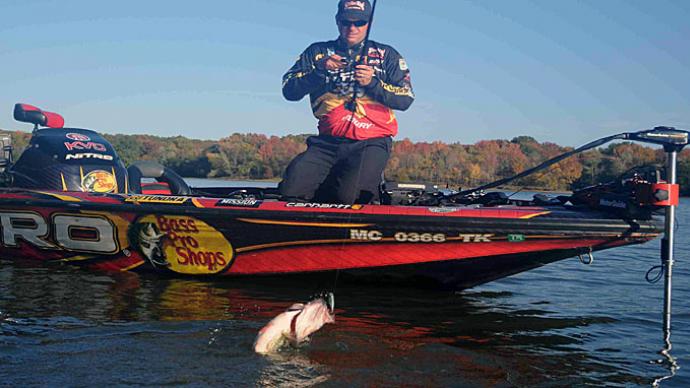
Late spring is my favorite time of the year to go fishing. The weather is usually a bit cool in the morning, but by 10 o'clock, the air has warmed enough to be quite comfortable.
It's been my experience that attempting to learn new ways to fish or using a different type of bait can be very frustrating when the bass do not cooperate. At this time of the year, most fish have spawned and are cruising the shallow, grassy banks for food. Now is the perfect time to try that new bait you picked up at the tackle show earlier in the year or to learn a new technique for fishing.
Have you tried fishing with a lipped crankbait? If the results were to put it down and return to something you're more comfortable with, perhaps you were not fishing it correctly. Cast the bait out and let the water settle around it before you move the bait. Then, with your rod tip at a 45-degree angle (about level with your waist), pull the bait under the water for two feet, then stop and reel in the loose line.
The bait will slowly rise, and when it reaches the top of the water, pull it under again. This method of fishing a crankbait gives the impression of a dying shad or other baitfish. Bass typically hit it as it slowly rises, so be ready to set the hook. You don't have to crank hard and fast all day to catch fish with this bait.
Carolina rigs are another easy way to fish. The basic idea is to quickly get the weight down to the bottom with the bait floating above and away from the weight. This gives the bait a natural look as it suspends in the water. Carolina rig fishing is versatile and can be used in shallow or deep water. Many different types of lures can be used with this technique, and such things as beads for noise can be added.
If you're fishing deep water, place the weight and a glass bead above a two-way swivel on heavy line. Next, tie your hook to a 15-inch to 4-foot length of line, called a leader, that is lighter in weight than the line on your reel. Tie the other end of this line to the bottom of the two-way swivel. Cast your lure out and keep a tight line so you can feel the fish bite.
This type of fishing can become tiresome if you are of a small frame. Light-line Carolina rig fishing is fun and easy to master. Instead of using heavy weights and swivels, place a removable #7 split-shot weight on your line about 12 to 20 inches above the hook. This weight can be changed quickly and easily to a heavier one if the wind begins to blow harder.
Worms, grubs, or French fry-type baits will float above the weight in the same manner as on the heavier line. Unlike the tight line needed to detect fish bites, the light line should be left loose. Watch the line; if it begins to move in any direction, tighten it and set the hook. When you reel the fish toward the boat, play the fish. Do not attempt to pull hard on the line because the fish can break off.
Carolina rigs can also be used with a diving bait when fish are found in deep water. Instead of slowly moving your rod tip as you would for worm fishing, sweep the rod from side to side. This gives the impression that your bait is alive.
The most important tip I can give you about fishing plastic bait is to fish them very slowly. Remember, the real worms, grubs, or snails do not fly, wiggle fast, or hop. They float and move slowly in the water. This is the concept for using these baits to duplicate something live with your Carolina-rigged bait.
I wish you all health and great spring fishing. May you catch a big bass on your next trip!




